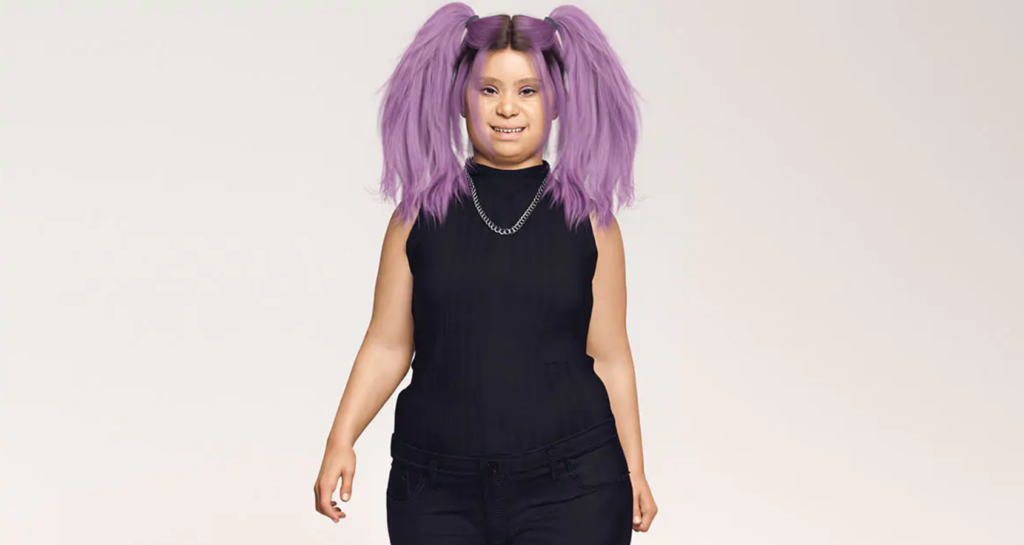Project from Down Syndrome International wants to improve online representation of those with disabilities
The digital world is still not a fully inclusive place. In a global study last year from the Institute of Digital Fashion, 60% of people said there was a lack of inclusivity in digital spheres, which can lead to the marginalization of certain communities such as those with disabilities.
Adding to this issue is that social media and the rise of virtual influencers (computer-generated digital characters) can perpetuate unrealistic beauty standards and further reduce visibility for the differently abled. But a new project aims to improve the diversity of digital spaces by creating a virtual influencer with Down syndrome.
Down Syndrome International (DSI), ad agency Forsman & Bodenfors and global digital modeling agency The Diigitals are behind the initiative, which wants to erase the perception that Down syndrome is a flaw with Kami, short for Kamilah—a name that means perfection, which is how they want her to be perceived.
Kami has her own Instagram account, @itskamisworld, where she will share details from her daily “life,” including her friends, likes and interests.
The campaign invites communities and brands to take #TheKamiPledge by making the digital world a more friendly and inclusive place for people living with Down syndrome.
“In a world filled with pixel-perfect virtual models, creating Kami is a way to completely reframe Down syndrome in the online space,” Rachel Kennedy and Firrdaus Yusoff, creatives at Forsman & Bodenfors Singapore, said in a statement. “We want to make it impossible to ignore Kami and everything she stands for. As we get to know her, Kami’s true potential will depend on how the world embraces her in her virtual form.”
Authentic representation
To ensure that Kami was an authentic representation of real women with Down syndrome, the team based her on an amalgamation of more than 100 young women from DSI’s global network, who served as the faces, physiques, gestures, voices and personalities the virtual model would embody.
Kami was developed through a process involving both machine learning and human craft. Portraits of the women were aligned before being added to a face averaging program to produce a single image. A 3D character creator program called Daz3D then generated the initial concept and face of Kami.
With this prototype, the team crafted her human features—from her eyelashes to skin textures—in 3D form. The avatar can be imported into different platforms.
“We really wanted Kami’s DNA to represent all the faces and aspects of these women with Down syndrome, which the program allowed us to do,” said Cameron James-Wilson, founder and CEO of The Diigitals. “Creating characters like Kami signify a challenge to the many layers of digital interface that currently lack inclusivity. We need to address some of the glaring problems in this space and build the online world we want for the future.”
Article Credits: ADWEEK

Pingback: Celebrate World Down Syndrome Day With 5 Astounding Tales Of These Extraordinary Down Syndrome Fighters - SLSV - A global media & CSR consultancy network